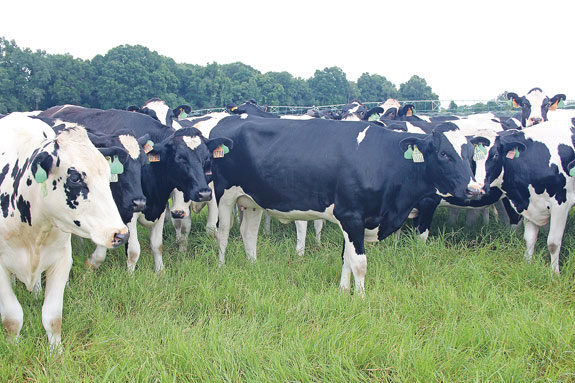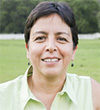When the quality of the grazed forage is high, it means that not only the forage nutritive value is high but also the intake of that forage is high.
The result is expected high rates of gain, abundant milk production or efficient reproduction – in cowboy terms, pounds on the scale, milk in the bucket, calves on the ground.
The issue is how can the manager be profitable, keep a pasture with the highest forage nutritive value and obtain the maximum intake by livestock?
To answer this question, we will examine the main factors that affect forage quality to guide the manager’s decision. There are many factors affecting quality but the primary are forage type, maturity, season and forage fertility and management.
1. Forage type (grasses or legumes, cool-season or warm-season or combinations)
When it comes to nutritive value, not all forage species are created equal. Legumes generally have higher nutritive value than grasses and cool-season forages are higher than warm-season ones.
For example, some values of crude protein include: alfalfa – 18 percent to 25 percent, corn leaves – 6 percent to 14 percent and coastal bermudagrass leaves – 4 percent to 18 percent. Legumes have higher crude protein concentrations and a higher intake by livestock because of the higher percentage of rapidly digestible leaves.
However, total digestible nutrients or TDN concentration of legumes and cool-season grasses are similar.
Cool-season grasses, such as rye and ryegrass, often have higher quality than warm-season (tropical) grasses such as bermudagrass and bahiagrass.
However, there is much variation in forage quality within and among grass genera. Making a decision of which type of forage or variety to plant sets the forage quality ceiling to be reached.
Because legumes are high in protein, they are usually recommended as companion forages either by itself or overseeded into existing pastures.
There is a limitation in terms of quality if the forage or variety you have planted naturally has low nutritive value and does not have potential to achieve high digestibility or accumulate protein in the leaf tissue.
2. Maturity
Maturity is the most important factor affecting forage quality of the grass or forage. It refers to how the forage changes over time.
Maturity or stage of forage regrowth at the time of utilization is determined by the number of days the pasture has been resting prior to grazing. If making hay or haylage, it is the number of days between harvests.
For example, a grass that is grazed after two weeks of resting period is a relatively immature grass, high in moisture and made up mostly of leaves with high crude protein and digestibility and no fibrous components, and cattle will eat it readily.
A grass that is grazed after two months of resting period is a very mature grass, with low moisture, low leaf-to-stem ratio, and cattle will eat it only if they need to.
Although cattle may consume this old material, it requires more resident time in the rumen in order to be degraded by the rumen microbes.
Forage quality begins to decline as soon as forages start to regrow due to the accumulation of stems and engrossing of the cell walls with poorly digested lignin.
Maturity of legumes and cool-season grasses can be assessed by determining the reproductive stage of growth. If the plant is flowering the forage is in a mature stage.
For warm-season grasses, however, weeks of regrowth are a better indicator of maturity than the reproductive phase because flowering may begin shortly after regrowth begins.
Relative to maturity effects on perennial grasses, the most dramatic difference is the decrease in voluntary intake that occurs when forage regrowth is between six and eight weeks old.
3. Season
Seasonal effects on forage quality have been observed. Forages grown in southern latitudes show a “summer slump” in forage nutritive value and animal gains when compared to spring and fall.
The higher temperatures and the associated increase in lignin deposition, together with increased growth rates, are linked to the decline in digestibility and reduced intake.
4. Fertilization and management
Generally, fertilizer application will tend to increase crude protein (CP) for a period of time following N fertilization.
If forage CP is low in unfertilized grass, then N fertilizer application will often increase forage CP and contribute to improved forage intake and animal performance.
Although nitrogen fertilization greatly affects grass yield and usually increases crude protein of the grass, the digestibility is little affected by fertilization.
Fertilization is used to modify quality in an indirect manner. By increasing the yield of the pastures, these can be stocked to a conservative rate and stubble height that allows for the grass to persist and be ready to be grazed at a relatively immature stage.
Recapping, there are several factors affecting forage quality, but the most important is maturity. At a very mature stage, the nutritive value of the forage will be low regardless of the forage type. Even the best of forages will be a low-quality one if used at a very mature stage. FG
PHOTO
The picture above shows the excellent body condition score of a herd of pregnant heifers under grazing conditions in north-central Florida. Concentrate supplementation throughout spring and summer grazing season has been significantly suppressed due to available forage of high quality.
The key to this successful outcome is the use of an adapted grass and production managed under a weekly grazing rotation onto pastures that have rested for 14 or 21 days that provide leafy, immature grass of high nutritive value. Photo courtesy of Yoana Newman.












